My Cars
For Petrolheads Only
When I took up my position as a temporary lecturer at Sussex University I realised that I would be able to afford a small car. Although I had not passed my driving test at that time, I had had some driving lessons; in Barrow-in-Furness with an old man who had a pre-war Humber Snipe. It had a long nose and three-speed gears. He was a patient methodical teacher. When I returned from New York in 1963 to my mother's house in Cambridge, Robert Weevers, an old student friend, gave me lessons in his old pre-war Ford Popular. In fact my first long drive was down to Brighton in it, with Robert nobly accompanying, so that I could explore for digs in Brighton. I remember scouring the Cambridge Daily News second-hand car pages and noting down two possibilities: a Renault Dauphine and an Austin Mini. My friend Chris Petrie, who was far more knowledgeable about cars, ferried me round to the garages where these items were for sale. He dissuaded me from buying the prettier Dauphine. Later when I got to know more about cars I realized what a service he had done me, because the Dauphine was an appalling death-trap. I bought the Mini.
Robert accompanied me down to Brighton and took the train back. I had found a flat in Marine Square and a garage to rent on the opposite side. I could not use the car to drive to work unless accompanied by a student with a driving licence. Fortunately there were lots in Kemptown happy to get a lift. It was going up the hill in St James Street that I first realised that the handbrake was not working. Cambridge is flat, and nowhere along the route from Cambridge to Brighton had I needed to use it. Happily, all that was needed was to adjust the cable. At the third attempt I passed the driving test, in Eastbourne, as the queue was shorter there. Then I had the freedom of the roads at last. In those heady days there was hardly any traffic. I could drive from work into the centre of Brighton, park outside a little restaurant and eat my lunch with my car on the other side of the window; a luxury unknown today. The Mini was very enjoyable in town and on country roads. But its small wheels made it uncomfortable for longer journeys and the seats were very spartan. The next summer I attended a mathematical conference, on Algebra, at St Andrews. Getting there was my first long tour. I spent the first night at my mother's house in Cambridge where I picked up a passenger, Kumar Chitre. The next day we drove up the A1 to Leeds where we stayed in a student hostel and picked up Kumar's cousin. I remember having fish curry for the first time, cooked by the other Indian students in the hostel. Our journey continued up to Scotland, shedding passengers at destinations en route. It was a hot summer, and my right forearm, exposed in the open window, got burnt. The Mini was not an ideal vehicle for a long trip in hot weather. At St Andrews I met Charles Leedham-Greene who had an ancient pre-war Alvis, in which I got a ride.
The University of East Anglia was just starting up and its mathematics department tried to recruit me. Sussex University bribed me to stay, increasing my salary. I had an interview at East Anglia, but their department's mathematical interests were different from mine. I had started to take a monthly magazine, called SMALL CAR. It soon changed its title to CAR. I much enjoyed the technical pieces by L.J.K.Setright who seemed to me to have the gift of making interesting what would have seemed boring if written by anybody else. I continued with CAR for many years, keeping each year's volume in a hard binder. Eventually, in 1982 I gave them all to my neighbour's youngest son, just entering his teens. But back in the 60s, after the East Anglia business, I realized that I could probably afford a convertible, a sports car, and I scoured CAR magazine for reviews of what was available. In the end I decided to buy a new Triumph Spitfire Mk II, which had just come out for £666.62. Just in time because the Mini's gear box was in terminal decline.
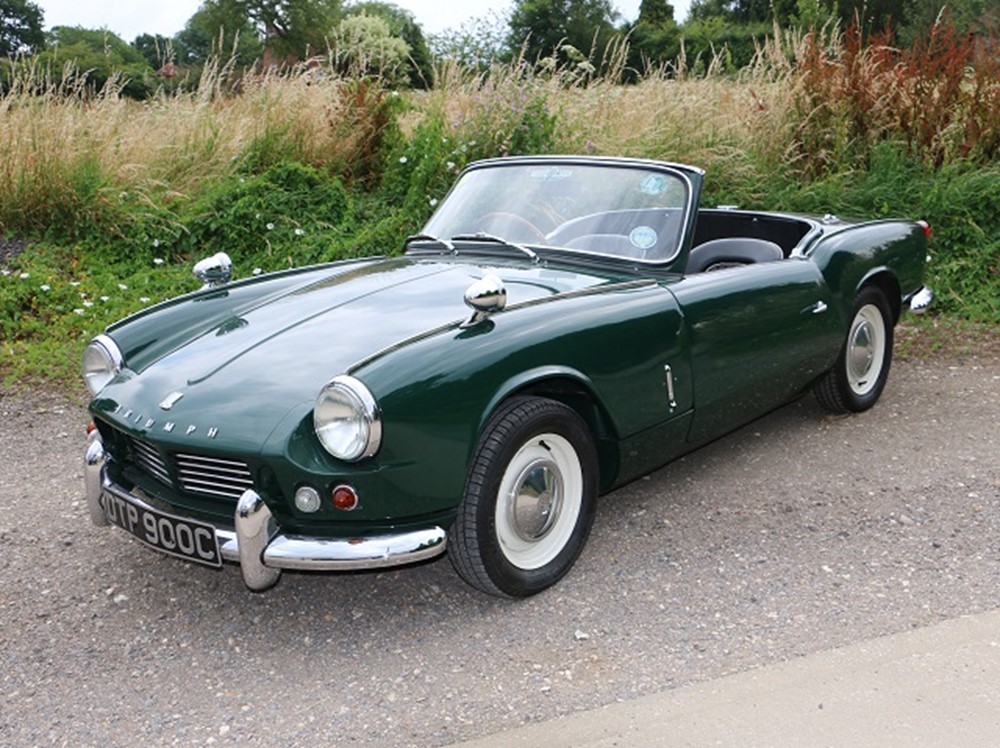
I ordered it in British Racing Green from Black Rock garage. It was a very pretty car, and I enjoyed it hugely. With the top down you did not notice that in fact it was rather noisy and not particularly fast. It had the dreaded Triumph Herald swing axles, and I had a nasty moment once near Beddingham, which taught me to be careful. Then I won £720 in a ridiculous magazine competition. I had noticed adverts for this competition at the door of my local newsagent, and one day, just for the hell of it, I decided to give it a go. You were presented with the portraits of a dozen or so young ladies and asked to rank them. Those who got the right answer would share £2,160. I thought about this and reckoned that if many people should win the magazine would derive less publicity. So I ordered the portraits ugliest first, and submitted my ordering. To my great surprise I won, along with two other persons. As this money had fallen out of the sky, so to speak, I decided to spend it all immediately. Any other course would have been an impiety. I loaned Joe Townsend £150 because he was about to get married to the lovely Seija, who was about to give birth, and they were hard up. In my mind it was a gift, and so it turned out. The remainder I decided to spend on something better than the Triumph Spitfire. Isleworth Garage was offering a British Racing Green Lotus Elan S3 SE, three months from new, the property of a Lord Rudolph Russell, for £1,152.
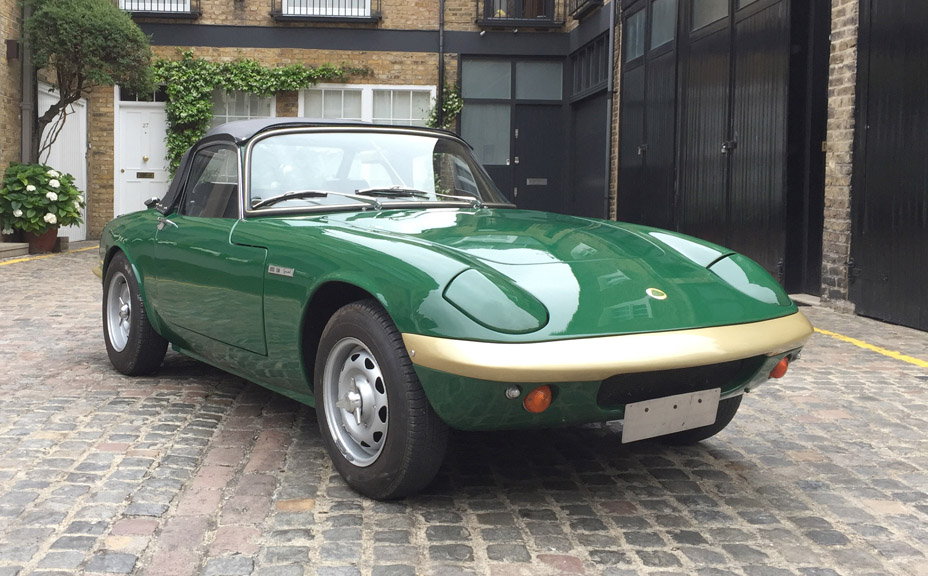
The night before I was due to collect it I did not sleep for excitement. I was not disappointed. The car was amazing. Light as a feather, electrifying acceleration, very comfortable, with an extraordinary daintiness - there is no other word. It took me a little while to get used to the notorious rubber doughnut-couplings between the differential and the rear wheels, but these too were apiece with the car's character: you had to respect its qualities. Lord Rudolph had fitted a leather small-size steering wheel. The steering was very high-geared, so only the lightest touch was called for. The gear lever was very short - more like a light switch. The driving experience made other cars feel very clumsy. I was amazed at the difference between the Spitfire and the Elan. I would drive the long way to work. I would take people for drives in the countryside. I began to get interested in the theoretical aspects of engineering. The Elan did have its flaws. The wires which hauled the electric windows up and down were not robust enough. The exhaust pipe would hit the ground on rough roads, which doubtless was not good for the exhaust gaskets. The starter motor could get jammed. The twin Weber carburettors needed constant adjustment. The accelerator return spring broke once and an elastic band had to get me back to civilization. But these were minor annoyances, that in no way dimmed the joys of ownership.
The Elan was the first car that I drove abroad. I was to attend a category theory meeting at Oberwolfach. A colleague of mine, James Hirschfeld, was on his way to Italy and I gave him a lift as far as Freiburg. The Elan was ideal for English country roads, but too low-geared for the autobahn. Five speed gear-boxes were a rarity in those days, but the Elan really needed a couple more gears than the four it had.
At the conference I met Anders Kock from the Matematisk Institut in Aarhus. And a year later found me driving there, to take up a guest appointment. The Lotus Europa, the first affordable mid-engined car, had just come on the market, but for export only. I traded the Elan for a Europa, left-hand drive of course, and set off for Denmark, a leisurely drive through Holland and Germany.
The Europa looked fabulous and was very comfortable on long journeys, the body being supported over a wider area because of the reclining seating position. Mine was equipped with a double ration of fuel tanks, so stops for refuelling were not frequent, the car being quite frugal. However, it was evident that it was not a luxury product. The worst fault was vibration if the wheels were unbalanced or insufficiently circular. The car was so light that wheel mass was a larger proportion of the total, and this you could feel. The gear shift linkage was not brilliant, and the rear view poor. Still, it went round corners faster than anything else on the road, providing that you could see over the grass verge. It would go under the barrier keeping out the ticketless at Cambridge railway station without trouble. It was a rare sight on the road anywhere and probably the lowest vehicle on the road - a sort of limbo-dancing car. There were only two others in Denmark. To get it serviced I had to take it to Udehansen Motor in Copenhagen. Herr Udehansen specialised in exotic cars. Once, when I was collecting my car from him, he gave me a ride in a Ferrari 365 GTB4 Daytona, whose purchaser, an American GI, had left for him to service, having just driven up from Modena. I surmised that he may well have given similar treatment to my car, too, but I did not ask. In fact the Europa was a bit too flash. It got stolen a couple of times and I got into the habit of removing the distributor when I parked it. A colleague at the Matematisk Institut, Brayton Gray, had a Triumph TR6. One day, in the centre of Aarhus, I recognized Brayton's car in front of me, but the driver was not Brayton. I knew anyway that Brayton was delivering a lecture at that moment. I followed. When the driver realised he was being followed he speeded up, then stopped without properly parking, leaped out and ran off. By good fortune this was only a few yards away from the police station. I dashed in and explained. They secured Brayton's car before his lecture had finished or he knew that his car had been taken. The winter of 1969 was very cold, and there was a lot of snow and ice. At a crossing of Ny Munkegade my car slid without stopping. Luckily there was no traffic to hit, but the incident convinced me to take up an offer to try a day's course at the Jyllandsring on how to drive on snow and ice. The course was funded by an insurance company, and lunch was provided. It was very instructive, and good fun. I was accompanied by an American colleague in a large automatic BMW that he had just bought in Germany.
The following summer I attended a conference at Varenna on lake Como. I had breakfast in Aarhus and set off southward. For a while on the autobahn I was followed by an inquisitive Lamborghini Espada. I had tea in Freiburg and stopped for the night in Switzerland at a motel which had been recommended to me, at the summit of a pass. The car park was full of very expensive cars. Even so, people came out to have a look at the Europa. Alas, the problem with exhaust gaskets is not just the noise, but the sucking in of colder air, at high frequency, and the temperature variation quickly damages the exhaust valves. When I took the car to a small garage just south of Varenna the mechanics went wild with aesthetic appreciation at the sight of the Europa, but alas there was nothing that they could do with an aluminium engine. I had to retreat slowly and noisily to England for repairs.
The Danish tax laws made it economically infeasible to have the Europa a second year in Denmark. I laid it up in the large garage of my father's house in Hexham, and bought a very humble beat-up Hillman Imp in Aarhus.
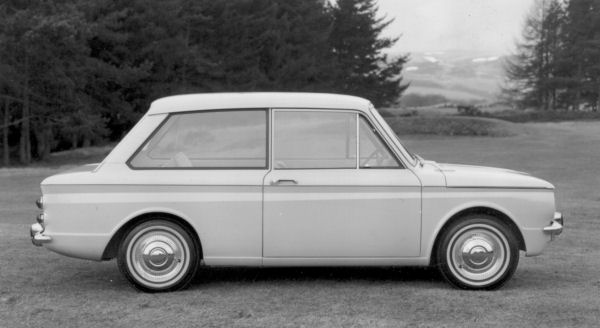
It was not a bad little car. Its chief failing was a tendency to blow its gaskets and overheat. The engine was technically interesting but in practice not very robust. The interior was spartan, you had to row the car with the gears to get up any kind of speed, but the handling was a delight. On the unmade trackways of northern Jutland it was a hoot. Karen and I had been invited to stay at Madame Setteberg's summer house at Slettestrand. We picked masses of chanterelles in the woods and ate them in omelettes with fresh baked bread.
Karen came to join me in England, and after a year of dipping our toes in the water we decided to marry. The time had come to foreswear two-seater sports cars. Besides, as the wedding was to be in Nyborg, and my mother and uncle would need a lift there, it was time for a four-seater. I had my eye on a Gordon Keeble at Leighton Buzzard car sales, but when I got there it had gone. But they had a white Jensen CV8, with black leather upholstery and 6.3 litres of Chrysler engine.
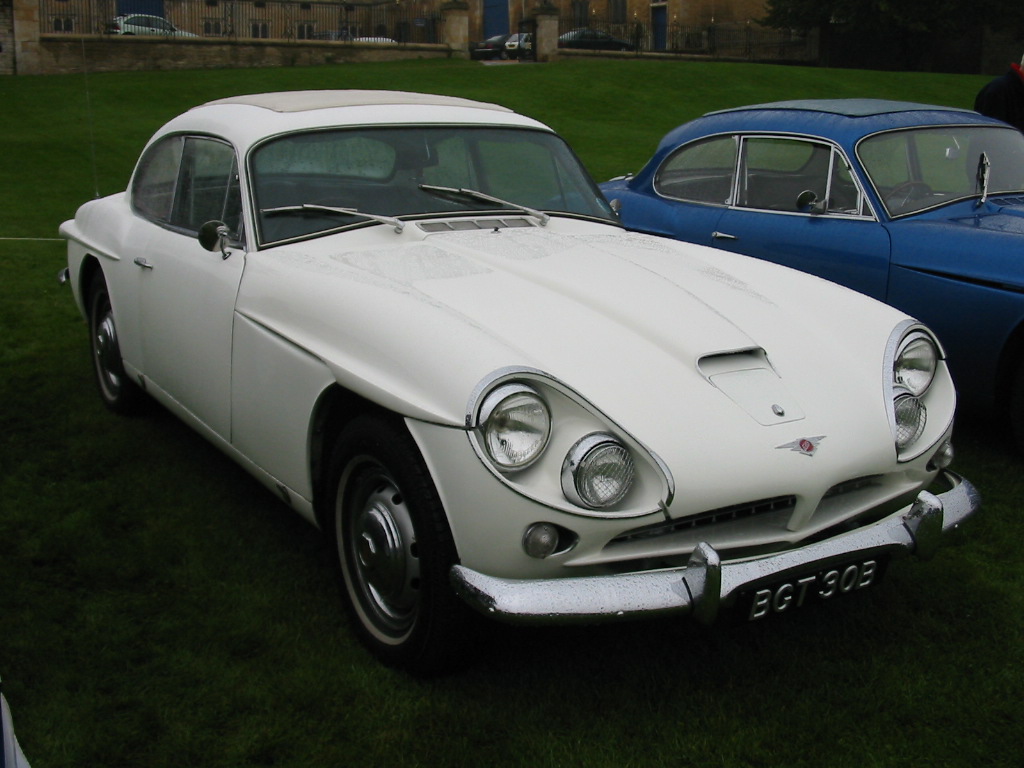
I suppose I had had my fill of fast cars with no torque. Now I was trying something that had only two forward gears, needing no more, which could accelerate uphill in top gear and leave your stomach at the bottom. The battery was from a truck. I fancied that when you turned the starter key the streetlights would flicker out. It was, however, a petrol-guzzling lemon and a very crude piece of work. That vast engine produced a lot of hot exhaust, so they had thoughtfully bolted asbestos panels between the exhaust box and the body. The trouble was those bolts went right through and were in contact with the foam rubber under the passenger seats. And we wondered why we were getting headaches! In France, on our way to Oberwolfach, this time via Geneva, the Jensen's rear seat started to smoke. Luckily it did not actually catch fire. However, the starter motor packed up. But we had insurance to cover this, and so we left the Jensen in Tours and hired a humble Simca estate car for the rest of the trip. When we retrieved the Jensen on our way back the new starter motor failed, a few miles out of Tours, but luckily we were on a hill and could restart the car by letting it roll. Without daring to turn the engine off we made it back to Dieppe with arrangements for the car to be pushed onto the ferry to Newhaven the next day. Again the RAC came to our rescue at Newhaven and the car was taken to the only garage in Brighton that handled Jensens. A few days later I picked it up, and a hundred yards down the road there was a bang and all the electrics went. By now I realized that the car needed exorcism as much as a mechanic, and I was desperate to get rid of it. Eventually I did. A colleague had an old Morris Minor, with a hole in the floor.
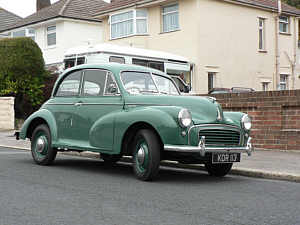
I bought it from him for £25. It started on the button every time, and it restored my faith in cars. An American friend, Jon Beck, wanted to borrow it to go to Zurich and back. I sold it to him for £1 on condition that on his return he would sell it back to me for the same sum. I knew Jon's way with parking tickets. The bonnet flew off just outside Roedean school. He fitted a bonnet of a different colour, and also put a bigger engine in. It still had the hole in the floor.
Soon after we were married I was invited to spend two semesters at the State University of New York in Buffalo. We had friends, Jack and Geraldine, there who had arranged a nearby ground-floor flat for us in a large wooden house. I was to go first and buy a car. Karen was to come a few weeks later on the France, due to make its last transatlantic voyage. Unfortunately the France was tied up by a strike at Le Havre and Karen had to travel by aeroplane. Within a few days I had bought a metallic blue Mustang coupe, that had been the property of a lady teacher who had never driven it out of town.
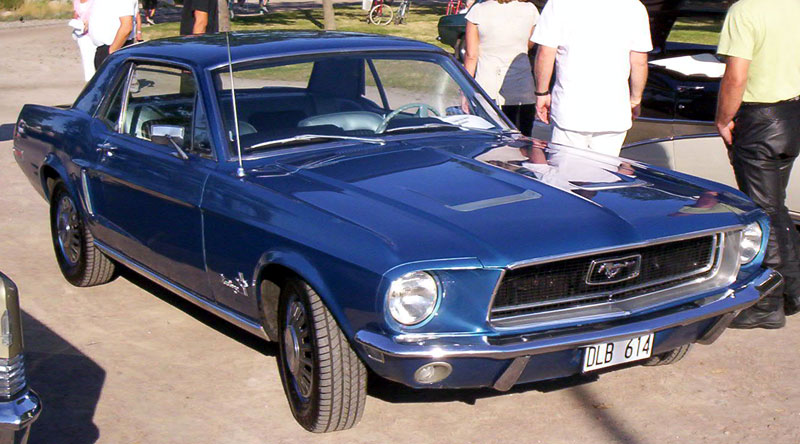
Well that is what the salesman said. I believed him because the dipswitch, foot operated, had rusted to the floor in the dipped position. I think the car cost $600. It had a 2.3 litre straight 6-cylinder engine, the small option, and automatic transmission. It was a crude piece of work, slow, with squeaky suspension and ponderous steering, but it started reliably all the time, and in Buffalo winters that can save your life. As to crude engineering, such a car has to be repairable in very remote places, possibly by gorillas equipped only with hammers, I told myself, so it made sense. Buffalo is mostly a huge grid of very long streets surrounded by freeways. The design is evidently intended to maximise fuel consumption, because you have to stop at every intersection. Having a car without automatic transmission there would be unthinkable. In these circumstances steering and handling matter not a whit. Even brakes are of secondary concern. The Mustang was well adapted to its environment. Also, it taught me to like automatics. When we departed eight months later I sold the car to a Chinese student for $500, in the car park of Buffalo airport.
Back in Brighton, I happened to see for sale in a garage down the road from us, a blue secondhand Fiat 124 Coupe in a very clean condition. I bought it. The salesman put a bunch of flowers for my wife on the back seat.
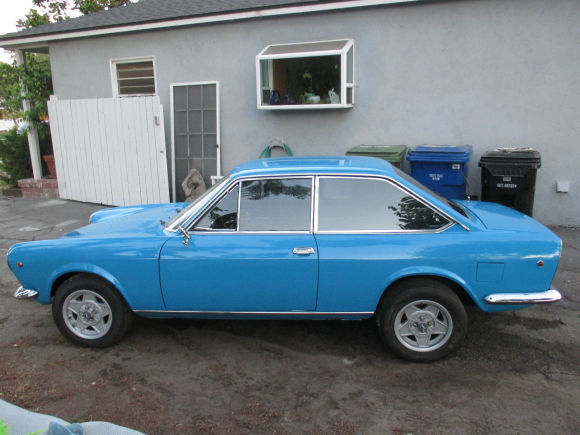
It had a 1400cc engine and a 5-speed gearbox and an opening roof. After the Mustang it felt like a sportscar. A practical sportscar; and it looked pretty, too. My wife passed her driving test on it. I drove it to Oberwolfach and back, giving a lift to Jack, Geraldine and Sammy Eilenberg on the return journey. Sammy and Geraldine quarrelled all the way back, but the car was as sweet as a nut. I can only describe its character by saying that I felt it was on my side. The only negative things that I can say of it are that the pedals were not in the right place, straight ahead, but forced a slanted stance, and that it felt curiously narrow; as if it should have been 20% wider. But it handled well and was reliable, except that, once, as I was going past the university on my way home a piston ring broke and ruined the engine. A garage in Lewes installed a 1600cc Fiat engine, which my friend Chris Turk had rescued from a wreck in the West Country.
By this time Chris was a lecturer in English at Cardiff university. He earned more than his lecturer's salary by dealing in secondhand Audis. He had got into this while he was a postgraduate at Sussex University. One of his research projects in English was the jargon of secondhand car salesmen. His facility with it enabled him to pass himself off as one of their breed, and so found himself being entrusted with cars to use for himself before he sold them on. He knew about cars, and would do repair jobs for fellow students. He had a predilection for larger cars, which he said were more comfortable and easier to work on. I remember an occasion in darkest Hove when we had gone to a cinema and his Austin Westminster had run out of petrol. Getting a can of petrol was not the problem, but the lack of a funnel. Fortunately he had a copy of the Times, which he rolled up as a substitute. I attended his wedding. His father-in-law dealed in Borgward Isabellas; had a back garden full of them waiting on the grass to be cannibalized. After procuring a new engine for the Fiat Chris gave me a ride in his latest car, a Lancia Beta. I was quite impressed, and he offered to get me a new one at trade price. He delivered it the day our first daughter was born. In fact I saw him en route for our house as I was driving Karen to hospital to give birth.
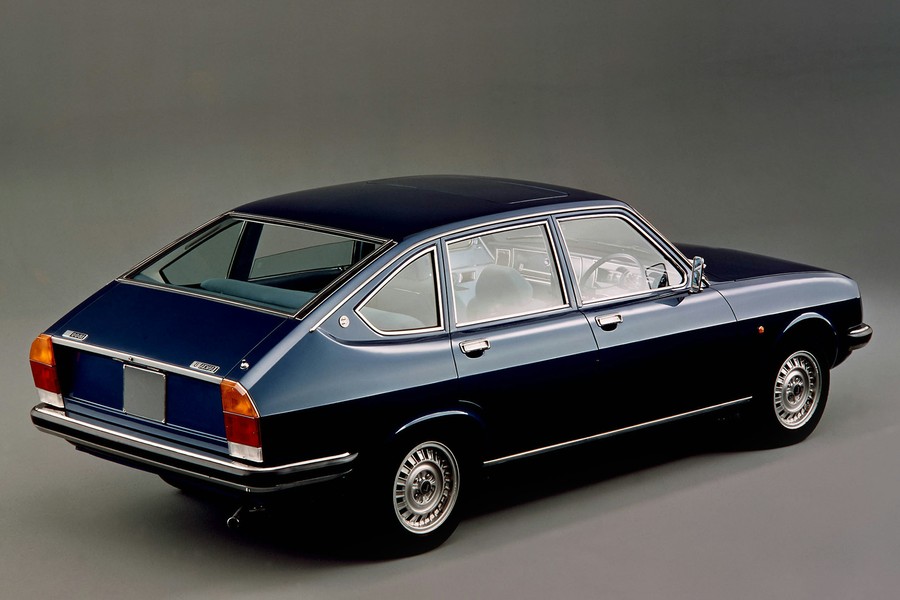
The Lancia was a nice car, no doubt of that, smooth and reliable, with an 1800cc engine and a 5-speed gearbox. I only bought three new cars in my life: the Triumph Spitfire, the Lotus Europa and the Lancia Beta. All my other purchases were secondhand. I reckoned that it is best to let others solve the teething problems. Unfortunately Lancias rusted. Eventually it was announced that Lancia was undertaking some sort of recall, because rusting engine mounts meant that the engine could drop out, which would have been embarrassing. We subscribed to Lancia's scheme and found we only had enough money for a modest 900cc Fiat 127.
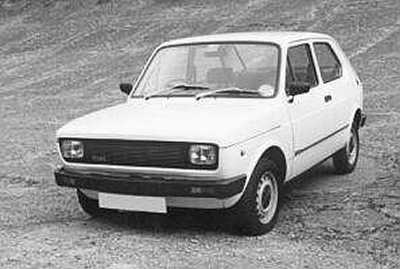
We had driven around Denmark in the Lancia to show off the new baby. Now we had another daughter, and the Fiat 127 made a similar pilgrimage. It was not very capable on the Autobahn, and it was rather small, especially with both daughters in the back, one in a carrycot. But we managed. I remember a ferry journey in Denmark, from Ebeltoft to Sjaellands Odder, I think, when we found ourselves next to a large Rolls Royce. Compared with our clutter and babythings, it had nothing on the back seat but a rolled umbrella. That summed it all up.
In 1982 we spent nine months in New York. I was a visiting professor at Columbia. It would have been stupid to have owned a car there. Our house we let to a Canadian professor and we sold our Fiat 127 to him. so when we returned to our house we needed new wheels. From a garage in Burgess Hill I bought a secondhand Honda Accord.
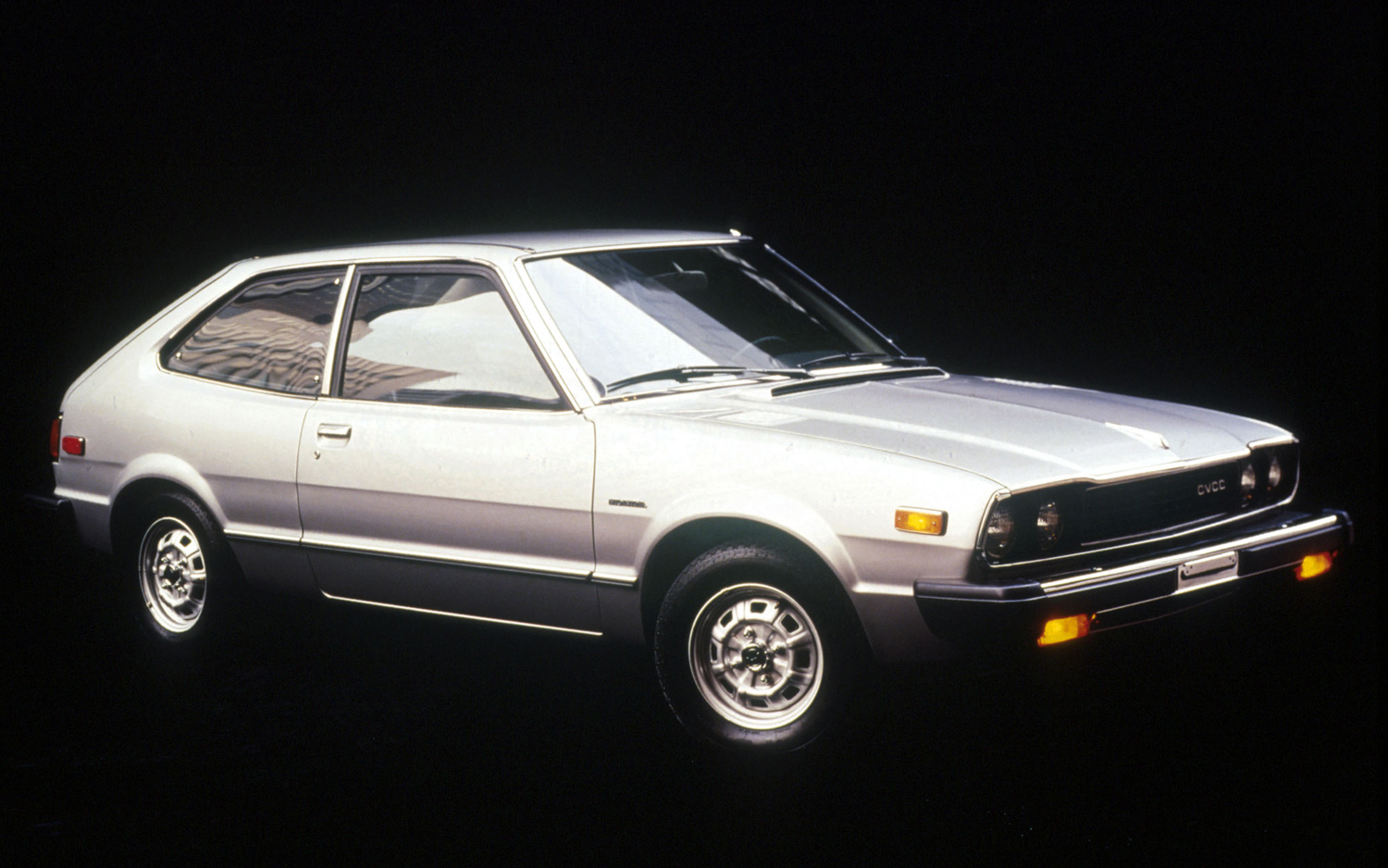
Apparently this car was brought out by Honda as a market competitor to the Volkswagen Golf. I liked it a lot. It was a three door hatchback with a 1600cc engine and rather interesting transmission. Instead of a manual or automatic gearbox it had a huge torque convertor, with a lockup mechanism. This gave excellent acceleration from standstill and a smooth ride. It was very reliable. The brakes overheated once going down a mountain in Wales, but I can think of nothing else to complain about. The back seats were adequate for two children, but when my mother moved to Lewes we needed a more ample car. When the Accord gave up the ghost, moments after I had let the children off at school in Brighton, my mother offered to chip in so that we could get something bigger. From a garage in East Hoathly I bought a Toyota Camry.
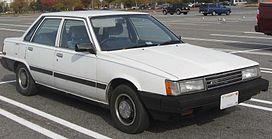
It had an 1800cc engine and an automatic gearbox with a manual overdrive. It was a good car, but on the motorway north of Flensburg the gearbox gave out. We limped to Esbjerg, our nearest harbour of safety where Else, Karen's sister, and family put us up. Enquiries showed that there was just one place within striking distance of Esbjerg which could attempt a repair. The Camry was not common in Denmark. It was in a small village in a remote part of Jutland about forty miles north of Esbjerg. Luckily there was a railway line to it from Esbjerg, an out of the way country route. Although they could not mend it properly they could do enough to let us get back to England on the Esbjerg to Harwich ferry. Eventually the gearbox was repaired and we had many years of service from it. After my mother died, when it seemed that our girls were more independent, we sold the Camry in Tonbridge Wells and bought a secondhand Honda Prelude.
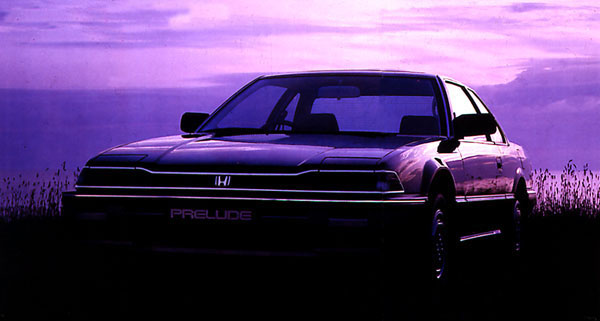
This had an 1800cc engine and a 5-speed manual gearbox. It had good handling and was a pleasant little car; just slightly sporting. I was beginning to appreciate Hondas, for their reliability and good handling. Our nearest agents were just outside Hurstmonceux, and they would lend me a car while mine was being serviced. Eventually I bought from them a two door Honda Accord Coupe.
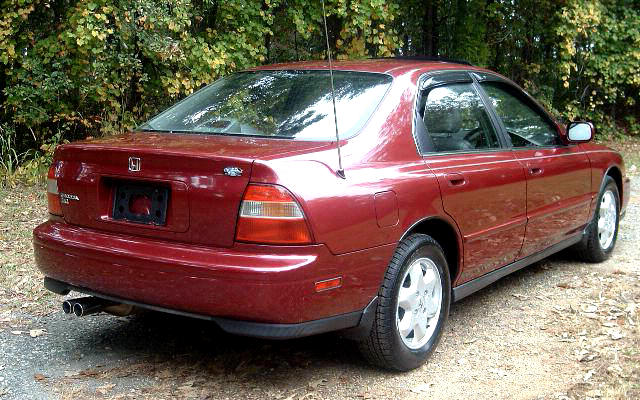
This was an automatic with a 2 litre engine. Very comfortable and pleasant to drive, perhaps the most practical car of all that I had owned. It was reliable and gave that sense of cooperation that made ownership a pleasure. When I had it serviced, and had been lent the latest show model for the day, I would nevertheless feel pleasure at being back in my own. Eventually, after eleven years of ownership, it broke down with some complicated alternator problem between Brighton and Lewes. Other problems with it had already been prophesied, and I realised that the time had come to say goodbye, not only to it but to motoring altogether.
I have been privileged to live through an era of freedom of the roads, before they became clogged. Cars have become far more reliable and efficient, but using them has become tedious and anxious. I am slightly ashamed of the fact, but I did love my cars. And now I love my bus-pass.